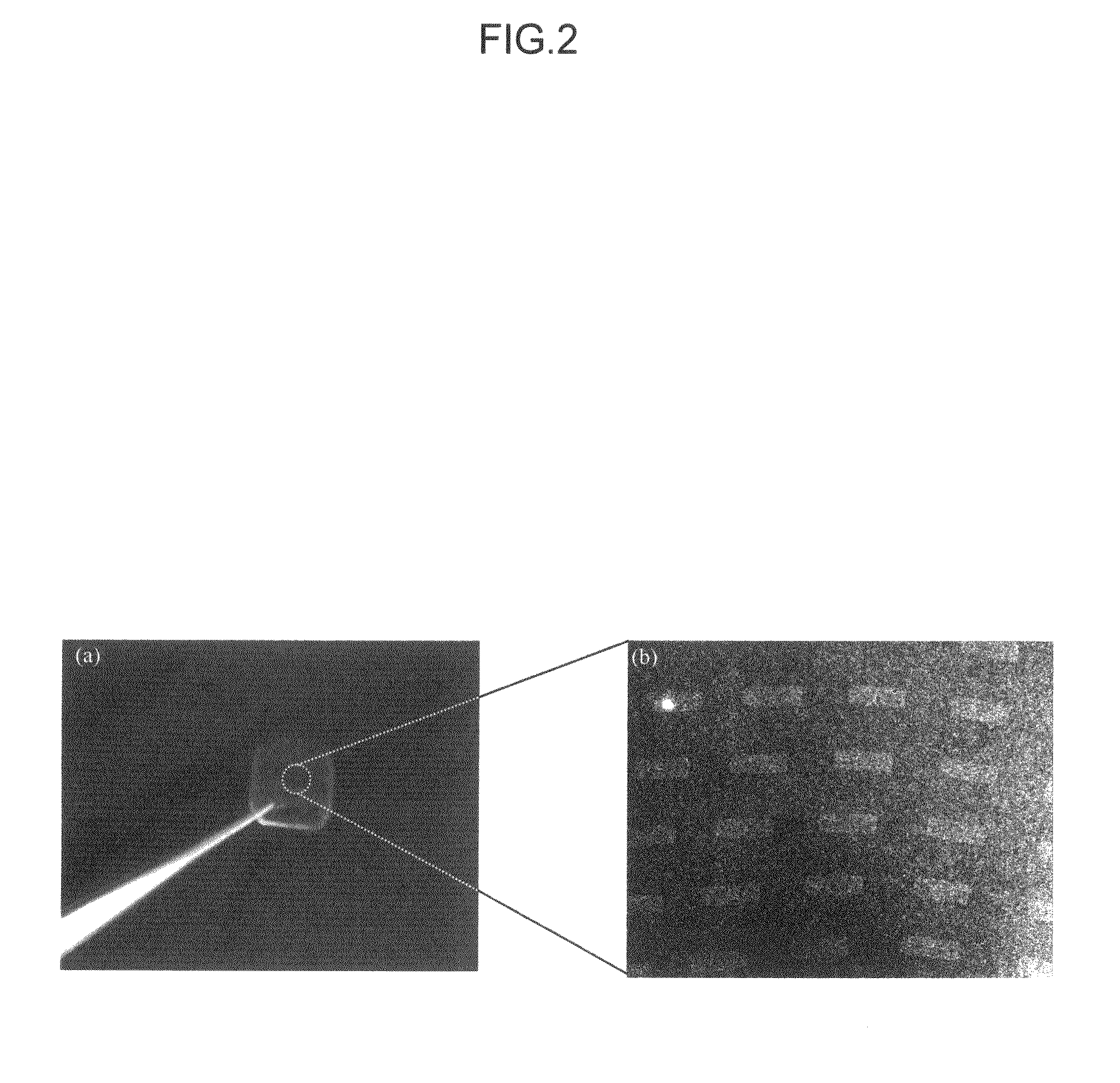Thin film-like polymer structure and method for preparing the same
a polymer structure and thin film technology, applied in the field of thin film polymer structure, can solve the problems of high equipment cost, inability to easily handle, and inefficient lb method, and achieve the effect of high precision of molds and complicated shapes, and high cost of printing plates or plastic molds
- Summary
- Abstract
- Description
- Claims
- Application Information
AI Technical Summary
Problems solved by technology
Method used
Image
Examples
example 1
Production of an Albumin Nanosheet Having Different Functional Substances on the A Surface and B Surface Thereof
example 1-1
Production of an Albumin (HSA) Nanosheet on a Hydrophilic / Hydrophobic Micropatterned Substrate
[0137]Octadecyltrimethoxysilane (ODMS) was vapor-deposited on a silicon oxide (SiO2) substrate. Then, a positive photoresist was coated thereon by a spin coater (800 rpm, 3 s+7000 rpm, 20 s), and was heated to be dried (100° C., 90 s). A photomask (rectangular, 10 μm×30 μm) was formed on the resultant substrate, and the substrate was irradiated with UV (7 s). After development and drying, a resist pattern was obtained on the substrate. A part of the ODMS not protected by the resist was removed by O2 plasma treatment (30 s), and then the resist was removed by acetone. Thus, a hydrophilic / hydrophobic micropatterned substrate (ODMS-SiO2 substrate) was produced (FIG. 1).
[0138]To the HSA, LC-SPDP (10 equivalent) was added (room temperature, 20 minutes), and the resultant substance was purified by GPC (gel permeation chromatography), thereby obtaining PD-HSA. Next, the PD group was reduced by dit...
example 1-2
HSA Nanosheet Exfoliation Using Polyvinyl Alcohol (PVA) as a Support Film
[0139]After casting the PVA solution (2.5 wt %) on the substrate, the HSA nanosheet was left stationary in a desiccator (room temperature, 12 hours) to dry. After being dried, the PVA film was easily exfoliated with tweezers (FIG. 1, FIG. 2a). Then, the PVA film or ODMS-SiO2 substrate where the PVA film was exfoliated was observed with a fluorescent microscope and an HSA nanosheet arranged in a pattern was observed on the PVA (FIG. 2b). After exfoliation of the PVA film, an HSA nanosheet could not be confirmed on the substrate. This is a result of the fact that, during drying, there is no hydrophobic interaction between the HSA nanosheet and the ODMS and that only Van der Waals force exists between the two. In contrast, since electrostatic interaction is induced between the HSA nanosheet and the PVA film, the nanosheet pattern was transferred to the PVA film. Accordingly, it was confirmed that PVA can be used t...
PUM
| Property | Measurement | Unit |
|---|---|---|
| Contact angle | aaaaa | aaaaa |
| Contact angle | aaaaa | aaaaa |
| Contact angle | aaaaa | aaaaa |
Abstract
Description
Claims
Application Information
 Login to View More
Login to View More - R&D
- Intellectual Property
- Life Sciences
- Materials
- Tech Scout
- Unparalleled Data Quality
- Higher Quality Content
- 60% Fewer Hallucinations
Browse by: Latest US Patents, China's latest patents, Technical Efficacy Thesaurus, Application Domain, Technology Topic, Popular Technical Reports.
© 2025 PatSnap. All rights reserved.Legal|Privacy policy|Modern Slavery Act Transparency Statement|Sitemap|About US| Contact US: help@patsnap.com



